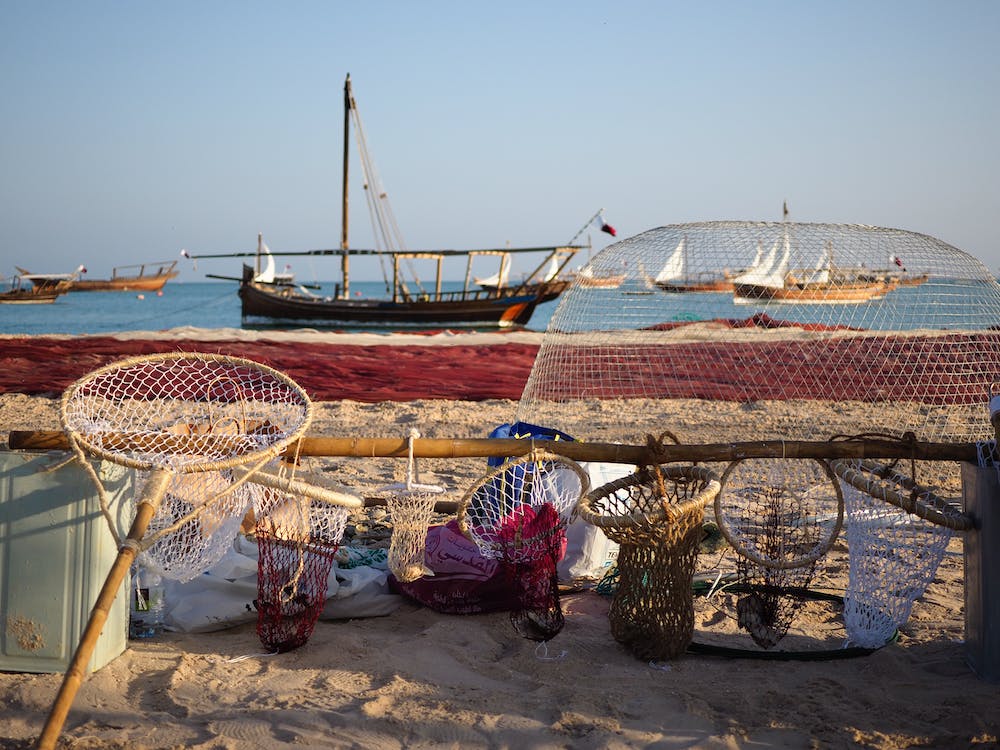Learning how to fish takes time, practice, and a lot of knowledge. You have to know the best gear to use, the right techniques, and more. Another important skill that anglers need to know is how to tie fishing knots.
Some knots are more complicated than others, and there are a wide variety of fishing knots that experienced anglers use. There are some fundamental knots that everyone should know to successfully go fishing, whether you’re surf fishing, bass fishing, fly fishing, or just looking for a day out on the water. Learn how to tie these basic fishing knots before you get out on the water.
The Palomar Knot
The Palomar knot is pretty easy to tie. It’s used to connect your line to a hook or a lure, which is the most essential use of knots when it comes to fishing. The Palomar knot is often used when tying heavier lines like braided line or fluorocarbon, but works well with monofilament as well. The Palomar is strong and durable, so it’s a very common and dependable knot.
How To Tie a Palomar Knot:
1. Double up about 6 inches of line and loop it through the eye of the hook or lure.
2. Tie a loose overhand knot. Make sure the hook is hanging from the bottom of the knot.
3. Holding the overhand knot, bring the loop of your line over the hook and slide the loop above the eye of the hook.
4. Pull the line to tighten your knot close by the hook eye.
5. Cut off excess tag line.
The Improved Clinch Knot
The improved clinch knot is widely used among all types of fishermen, and for good reason. It is strong, easy to tie, and holds up well against tough fighting fish. It is fast and simple to tie, so this one is easy to pick up even for the most inexperienced angler. The improved clinch knot is used to fasten hooks to line or leaders. It works best with lighter lines, so it is less common among heavy mono, braided, or fluorocarbon lines.
How To Tie an Improved Clinch Knot:
1. Thread the end of your line through the eye of a hook or lure.
2. Double back with the line and wrap it around the line leading to the hook 5 or more times.
3. Pull the end of the line back through the loop formed between the eye and the first wrap around.
4. Pull the line through the big loop formed from the last step.
5. Wet knot and pull tight on the tag end.
6. Clip the tag end of line once it is tight against the hook.
The Trilene Knot
The Trilene knot is used when you don’t have an open end of your line to tie something to. If you want to attach a weight, swivel, or another piece of tackle to a line with a hook already, you can use a Trilene knot. It’s essentially a clinch knot with an added loop for extra support.
How To Tie a Trilene Knot:
1. Pull the end of the line through the eye of a hook or other piece of tackle.
2. Pull the end of the line through the eye again, looping in the same direction.
3. Wrap extra line around the line/leader 5 or more times, moving away from the hook.
4. Pull the end of the line through the loop made in steps 1 and 2.
5. Wet the line and slowly pull it tight.
6. Clip the excess line close to the hook (or other piece of tackle) eye.
The Albright Knot
The Albright knot is slightly more difficult and niche, but it is an essential knot for any angler. Unlike the other knots on this list, the albright knot is best for tying two pieces of line together, or your line to your leader. It’s most commonly used for tying a lighter line to a heavy or wire leader. This not can be difficult for beginners to tie, but with time and practice it will become a favorite in any angler’s arsenal.
How To Tie an Albright Knot:
1. Double up and make a loop in the heavier line.
2. Run about 10 or more inches of the lighter line through the heavy line loop.
3. Hold the three strands of line between your thumb and finger to keep it in place. Wrap the light line back over itself and over the heavy loop.
4. Wrap the light line around the doubled heavy line 10 or more times, tightly.
5. Pull the end of the light line back through the loop, exiting the loop on the same side that you entered with the light line.
6. Hold both ends of the doubled heavy line, and slide the wrapped light line towards the end of the loop.
7. Pull the light line to tighten the knot.
8. Clip the excess tag end close to the knot.
Learn How to Tie Fishing Knots
Learning how to tie fishing knots can be frustrating, especially when dealing with thin line and tiny tackle. Practice until you become a pro! Not only will your knots improve, but you’ll be able to tie better rigs and improve your fishing skills all around.
